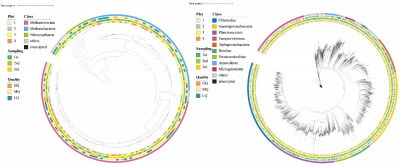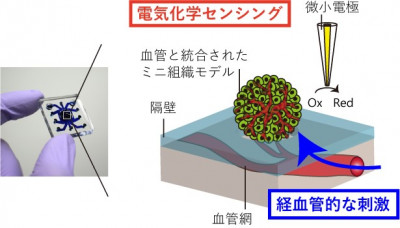UMass Amherstで軍用にテストされた空間的な忌避剤は、いつかダニが媒介する病気の発生を抑えることができるかもしれない Spatial repellents tested at UMass Amherst for the Army could one day reduce tick-borne disease incidence
2022-11-08 マサチューセッツ大学アマースト校
この結果は、2種類の空間的忌避剤がダニの行動を変化させ、垂直に登ることを少なくし、棒から離脱または落下させる効果があることがわかった。
化合物は、米国で主に人を咬む3種類のマダニに対してテストされました。ライム病やアナプラズマ病などを媒介するI. scapularis(クロアシナガダニ)、ロッキー山紅斑熱や野兎病などを媒介するD. variabilis(アメリカイヌダニ)、エーリキア症や赤肉アレルギーと関連があるA. americanum(ローンスターダニ)である。
実験の結果、トランスフルトリンはD. variabilisを75%、A. Americanumを67%、I. scapularisを50%抑止することが判明しました。Metofluthrinは、D. variabilisを81%、A. americanumを73%、I. scapularisを72%阻止し、わずかに効果があった。
<関連情報>
- https://www.umass.edu/news/article/ticked-new-device-may-offer-better-way-prevent-tick-bites
- https://journals.plos.org/plosone/article?id=10.1371/journal.pone.0269150
空間忌避剤トランスフルトリンとメトフルトリンはその場の垂直上昇試験における皮膚中心バリアビリス、アンブリオマアメリカナム、および肩甲骨イクソデスの挙動に影響を与える。 Spatial repellents transfluthrin and metofluthrin affect the behavior of Dermacentor variabilis, Amblyomma americanum, and Ixodes scapularis in an in vitro vertical climb assay
Eric L. Siegel,Marcos Olivera,Esteban Martinez Roig,Melynda Perry,Andrew Y. Li,Sebastián D’hers,Noel M. Elman,Stephen M. Rich
PLOS ONE Published: November 8, 2022
DOI:https://doi.org/10.1371/journal.pone.0269150
Abstract
Repellents serve an important role in bite protection. Tick repellents largely rely on biomechanisms that induce responses with direct contact, but synthetic pyrethroids used as spatial repellents against insects have received recent attention for potential use in tick protection systems. An in vitro vertical climb assay was designed to assess spatial repellency against Dermacentor variabilis, Amblyomma americanum, and Ixodes scapularis adult, female ticks. Climbing behavior was assessed with and without the presence of two spatial repellents, transfluthrin and metofluthrin. Repellency parameters were defined to simulate the natural questing behavior of ambushing ticks, including measures of detachment, pseudo-questing duration, climbing deterrence, and activity. Significant effects were observed within each parameter. D. variabilis showed the greatest general susceptibility to each repellent, followed by A. americanum, and I. scapularis. The most important and integrative measure of repellency was climbing deterrence–a measure of the spatial repellent’s ability to disrupt a tick’s natural propensity to climb. Transfluthrin deterred 75% of D. variabilis, 67% of A. americanum, and 50% of I. scapularis. Metofluthrin was slightly more effective, deterring 81% of D. variabilis, 73% of A. americanum, and 72% of I. scapularis. The present study poses a novel paradigm for repellency and reports a preliminary assessment of spatial repellent effect on tick behavior. Further research will assess spatial repellency in a more natural setting, scale exposure conditions, and incorporate host cues.


